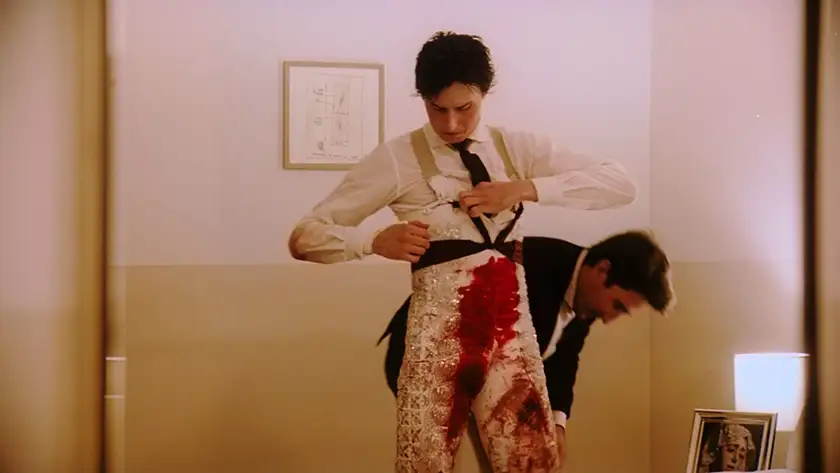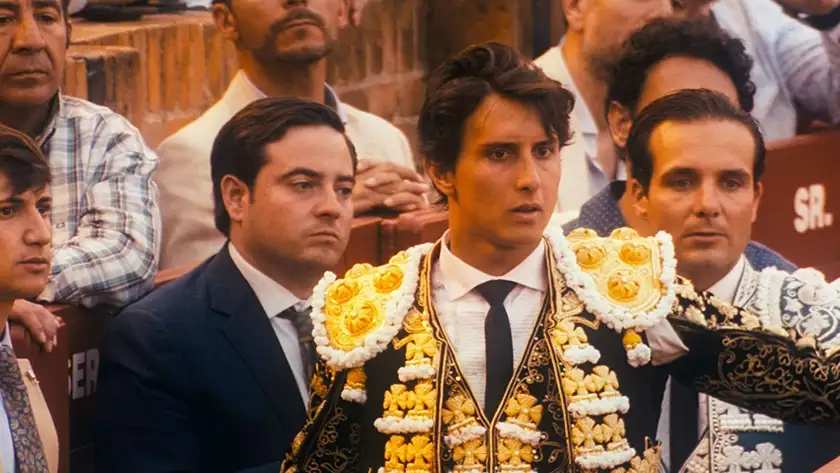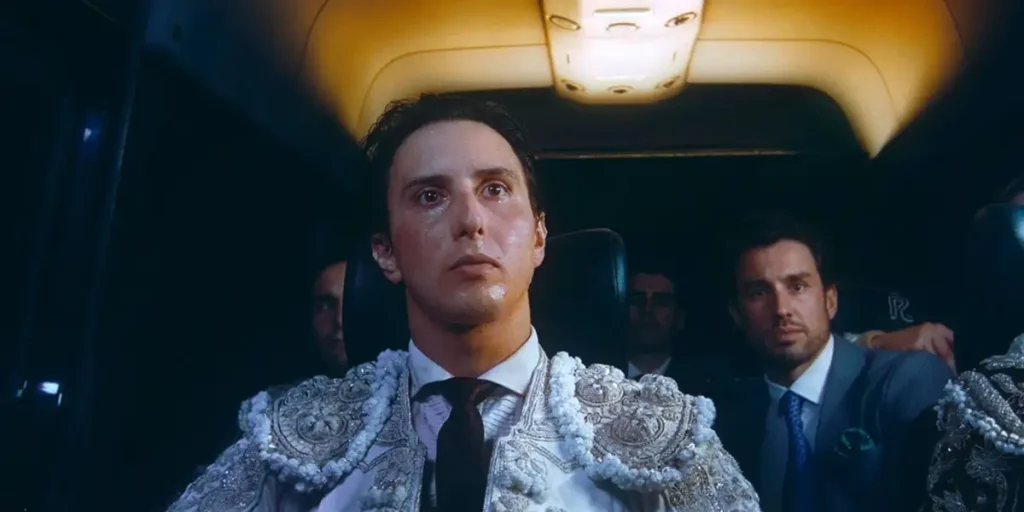Albert Serra’s Afternoons of Solitude, an unflinching look at bullfighting star Andrés Roca Rey, is the most brutal and poetic documentary of the year thus far.
Trigger Warning: This review of the film Afternoons of Solitude contains conversations about and descriptions of graphic animal cruelty, which may trigger some readers.
Writer and Director: Albert Serra
Genre: Documentary
Run Time: 123′
New York Film Festival Premiere: October 3-11, 2024
U.S. Release Date: TBA
U.K. Release Date: TBA
To some, the art of bullfighting is archaic. It’s undeniable animal brutality makes it hard to grapple with its continued existence and the rationalization of anyone going to support it. Bullfighting is seen by some as a sport, to others as a performance art and to a few a cultural ritual. No matter the public perception, its existence persists and within the bullfighting community, there is bountiful glory to be found at the pinnacle of the sport.
Albert Serra’s latest documentary, Afternoons of Solitude (Tardes de Soledad), takes an artful look at the intensive brutality of bullfighting.
Afternoons of Solitude is an intimate portrait of real-life Peruvian-born bullfighter Andrés Roca Rey. The documentary follows Andrés as his fights begin to launch him into an elite league of fighters. Andrés is charismatic and provocative in the ring, his fighting has a specialized artistic flare. However, the film takes us beyond his showman façade and gives us a glimpse at the moments of calm he has before and after his fights.
The documentary very rarely gives the audience any wide shots of what we are watching. There’s a repeated framing of Andrés in the van before and after his fights. There is no way we could physically be any closer to Andrés, yet through his facial expressions we can see he is worlds away. Serra employs these up-close frames throughout the entirety of the film. Even during the most vicious parts of the fights, Serra keeps the camera tight on the bulls forcing the audience to see the fight through.
At times, the documentary feels almost too barbaric to stomach. Serra makes the audience watch the bullfights from start to finish, which means there are several bull deaths captured on camera. It is not an easy film to sit through as the brutality is shown bare and the framing of the shots refuses to let you look away.
Bullfighting does not need to be shot in any specific way for people to understand how horrific it is; however, it’s very difficult to make people understand it as an art form, a connection between life and death. Serra is able to frame bullfighting through a poetic lens and actualize a story about life, death and masculinity in a way I have never seen before.

As much as Afternoons of Solitude is an on-the-ground look at bullfighting, it’s also an in-depth look at Andrés and the way he is trying to comprehend the rise of his career. The dedication and time spent to be successful as a bullfighter is exhausting. It’s clear passion drives him but a very strict sense of discipline is what keeps him going.
Serra’s camera only shows Andrés and the bulls he fights as the central focus of each scene. The opening shot of the film is a bull, not in an arena. You see the bull is branded and you can almost feel the anxiety permeating through the screen. The next shot is of Andrés getting into the car after a fight. While he is in his ornate uniform, known amongst bullfighters as traje de luces (translating to “suit of lights”), he is dripping sweat, breathing heavily and having a hard time calming himself down. While we don’t see it in the opening shot, it’s later revealed his white traje de luces is covered in blood from the fight.
This juxtaposition of shots, where it is clear the subject of both are in distress, sets up an interesting commentary throughout the rest of the film. Comparing Andrés to the bull in an indirect but undeniable way gives the bull the dignity of seeing it as a fighter. It makes the audience understand these bullfighters don’t see the bulls as sacred animals but as worthy and savage opponents.
Later on in the film, we hear Andrés and his team speak about how tough the bulls they just fought were, calling them criminals, amongst other names. It’s in these moments that we understand they don’t see the bulls as beneath them, but rather as tests of strength nature has provided to only the bravest of men.
Andrés wants to be the best, the bravest man. Even in fights where he is repeatedly attacked, he refuses to back down. In these moments we come to understand a lot about the culture Andrés grew up being a part of. The crazier the fight, the more attention and devotion he is shown. There is no glory without suffering. As Andrés becomes more successful, he worries less and less about all the non-fight-related stuff around him. His team repeatedly tells him he is the man and he is a legend, feeding this idea that masculinity is something to not just be earned, but conquered.

Throughout the film, surprisingly we don’t hear much of what Andrés is thinking. It’s a peculiar relationship we build with him during the documentary as he is the focus in most of the shots, but we get to know him specifically on a nonverbal level. We understand his nervous ticks and the subtle ways he unknowingly shows he is in pain.
The majority of the dialogue throughout the film comes from Andrés’ crew. They give him constant praise and dissect each and every second of his fights while he sits and tries to process what has just happened in the ring. So much of the crew’s comments center around Andrés’ legacy he is building and his masculinity. The inclusion of these comments creates an interesting conversation about the price of glory, specifically in bullfighting. Is this risk to Andrés’ life worth these moments of praise? Is the admiration of fans worth the killing of animals? Is the promise of a legacy worth this nonsensical destruction of nature?
Afternoons of Solitude is an intense watch. It’s a film that makes you uncomfortable but implores you to stick around. Serra’s directorial style is specific and artful in the way it provokes conversation. I don’t believe the documentary makes that strong of a case for or against bullfighting; however, if you dig deeper you will understand that was never Serra’s goal. Serra’s goal was to spark conversations about the price of glory and the perception of humanity. It is beyond clear, by the end of the film, that is exactly what he has done.
Afternoons of Solitude will be screened at the New York Film Festival on October 3-11, 2024. Read our review of Roberto Minervini’s The Damned!

